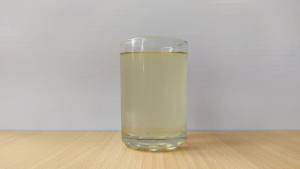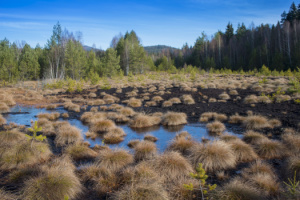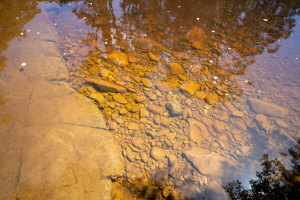
What are tannins in water, and how do they affect our health and quality of life?
More...
Tannins are natural compounds found in plants and can end up in water through various means.
It is essential to understand tannins because they can cause discoloration and unpleasant taste in the water we consume or use for multiple purposes.
Moreover, understanding the effects of tannins in water is essential for maintaining the quality and aesthetics of our drinking supply.
Additionally, being aware of related terms like organic matter, humic acid, and tea-colored water assists in understanding tannin-related concepts thoroughly.
This post aims to provide a general overview of tannins in water. By understanding the nature of these compounds, we can gain valuable insight into their effects on the quality of our drinking water and proactively ensure its purity from our kitchen sinks.
What Are Tannins in Water and the Effects of Consumption
Tannins in water can lead to color changes and an unpleasant taste.
Excessive levels of tannins in water, although harmless to consume, can cause stains on laundry and fixtures.
However, long-term exposure to high levels of tannin contamination could have negative consequences despite the immediate lack of health risks associated with consumption.
As a result, discolored water may be off-putting for many people, affecting their willingness to drink or use it for cooking and other household activities.
Sources of Tannins in Water
Natural Sources: Decaying Vegetation in Rivers and Lakes
Decaying vegetation in rivers and lakes releases tannins into the surrounding environment when leaves, branches, or other plant materials decompose in bodies of water.
As this decomposition occurs, tannins are released into the water, affecting the surrounding environment.
Tannins are organic compounds found in plants and have a brownish color. Also, they give water a tea-like appearance and may make it taste different.
Further, tannins might also affect animals living in these bodies of water. Studying tannins in water is vital because they are essential in understanding aquatic ecosystems.

Natural Sources: Peat Bogs and Marshes
Wetland areas contain a high concentration of organic matter that contributes to releasing tannins into nearby waters.
Peat bogs and marshes are particular kinds of wetland areas. Likewise, these places have lots of organic matter, meaning things like plants and animals once alive.
Equally important, when this organic matter breaks down in the water, it releases tannins.
Further, tannins can change the color of the nearby waters, making them look brown or yellowish.
Human Activities: Agricultural Runoff Containing Organic Matter
Excessive use of fertilizers or improper disposal practices can result in agricultural runoff reaching bodies of water with significant amounts of organic matter, including tannin-producing substances.
Agricultural runoff, which happens when too much fertilizer is used or disposed of incorrectly, can be a problem for bodies of water.
In the same way, this runoff carries lots of stuff from the farms, including tannins.
When there are too many tannins in the water, it can affect plants and animals that live in it. Further, the tannins also give the water a taste that some might not like.
Human Activities: Industrial Discharges With High Organic Content
Industrial discharges with high organic content can be a significant source of tannin contamination in water.
Similarly, these discharges come from specific factories and businesses that produce wastewater containing organic substances..
Additionally, tannins are natural compounds in plants, trees, and soil. Still, when industries release their waste into rivers or lakes, it increases the overall level of tannins in the water.
As a result, these compounds can negatively affect aquatic life and make the water unsuitable for drinking.
In addition, these industries must actively find ways to reduce their organic waste and appropriately treat their wastewater before releasing it into nature to protect our environment and guarantee clean water for all.
Assessing the Presence of Tannins in Water
Home Test Kits Available
Various companies have made readily accessible and easily obtainable test kits to detect tannin presence.
Following the instructions, homeowners can use these kits to test their water and observe any color changes indicating tannin contamination.
Furthermore, by carefully observing any color changes that may indicate the presence of tannins, homeowners can determine whether their drinking water is affected by this natural compound or not.
Thus, by following the provided instructions diligently, these kits enable homeowners to assess their water quality at home conveniently.
Professional Testing Services Offered by Labs
Professional testing services from laboratories are available for a more comprehensive analysis of tannin levels in water.
Likewise, these facilities utilize sophisticated equipment and techniques to provide accurate results regarding the presence and concentration of tannins in your water supply.
Similarly, utilizing their expertise ensures reliable results regarding the level of tannins in your drinking water.
A comprehensive analysis through professional testing services ensures you have all the necessary information about tannin levels in your home's water supply for better understanding and making informed decisions regarding improving its quality.

Removing or Reducing Tannins From Water
Water Filtration Methods: Carbon Filters Reduce Tannins Effectively
Water filtration methods help ensure that our water is clean and safe.
Carbon filters are commonly used for home water treatment systems and prove effective in removing or reducing the level of tannins present in drinking water supplies.
The carbon absorbs organic compounds, including tannins, producing cleaner and better-tasting water.
As previously mentioned, tannins are organic compounds that can affect the taste and quality of water.
Thus, by absorbing these tannins, carbon filters provide us with cleaner and better-tasting water.
So, when removing or reducing tannins from our drinking water, carbon filters are a reliable option for improved hydration and overall health.
Water Filtration Methods: Reverse Osmosis Systems
Reverse osmosis systems effectively eliminate a wide range of impurities, utilizing advanced technology to separate various undesirable substances, such as tannins.
Moreover, these exceptional machines utilize a unique filter to propel water, effectively capturing impurities and providing pure drinking water without any undesirable elements.
As discussed earlier, tannins can make water taste weird or look brownish.
With reverse osmosis systems, we don't have to worry about tannins or other gross stuff ruining our refreshing drinks!
Preventing Tannins Water Issues
Properly maintaining septic systems is crucial as it reduces contamination risks associated with high levels of organic matter entering bodies of water such as rivers, lakes, or underground aquifers.
Regular inspections and maintenance help ensure septic tanks function efficiently without leaking harmful substances into nearby freshwater sources.
Furthermore, excessive tannins in water can affect its quality, but preventive measures like carbon filters and land use management can help remove them.
Similarly, excessive tannins also disrupt aquatic ecosystems by interfering with sunlight penetration and affecting plant and fish populations.
Proper septic system maintenance protects human health and preserves the delicate balance within marine environments.
Therefore, proactive actions through upkeep and filtration methods help keep freshwater resources for future generations.

In the Final Analysis
Consumers need to understand the presence and impact of tannins in water, as they can significantly influence its taste and odor.
Moreover, this knowledge is essential for selecting suitable filtration methods that improve overall satisfaction with the water quality.
Thus, understanding the presence and effects of tannins in our drinking water is vital for maintaining its quality and addressing potential health concerns related to its consumption.
Discolored or unpleasant-tasting tap water may indicate high levels of natural or human-induced contamination with these compounds.
Testing options allow us to accurately assess the extent of this issue at home, while professional lab tests provide a deeper understanding if required.
Water filtration methods such as carbon filters and reverse osmosis systems effectively remove or reduce tannin levels.
Further, protecting our water sources is essential to preventing tannin contamination from human activities, like agricultural practices and industrial discharges.
In brief, learning about tannins and taking appropriate measures can ensure access to clean, safe drinking water for ourselves and future generations.

